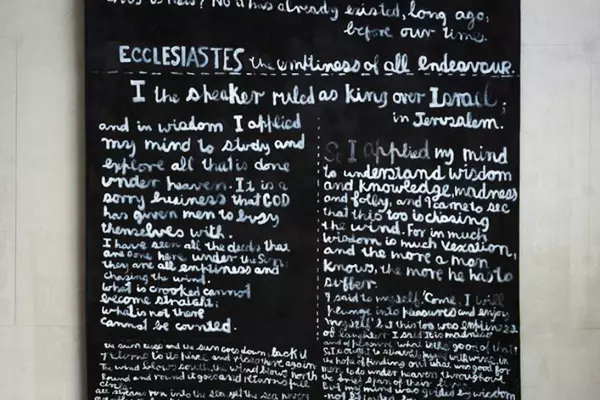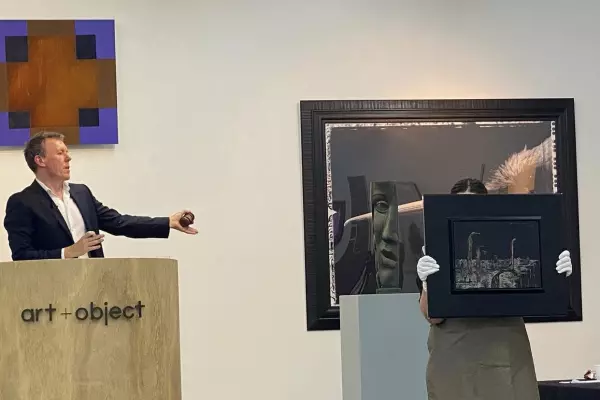In my previous articles for BusinessDesk about buying art for investment, I have written about knowledge, and how learning about artists and their practice, and about art history in general, is one of the most important aspects of making a sound art investment.
This article will focus on what I consider the next most important area of buying art and that is setting a budget, sticking to it and making sure you are paying a fair price.
It is very important to set a budget prior to purchasing and for the more disciplined among us, this could be an annual amount that is spent on art, or running a separate account for purchases so you can clearly keep track of your spending. For others, setting a budget could mean an amount that feels comfortable when considered against the work being purchased, and for this you’ll need to have that all-important art market knowledge behind you to feel confident about your decision.
If you are buying at auction, set a final price in your head and stick to it when you bid, as it’s very easy to get carried away and end up spending more than you intended. If you find it hard to stop bidding at your set amount, consider asking someone else to bid for you, or leave an absentee bid (where the auction house will bid on your behalf up to your top price provided there are competing bids). You will need to factor in approximately 20 percent on top of the hammer price (a fee called the buyer’s premium) for auction purchases; this can often catch out new buyers if they haven’t read the conditions of sale prior to bidding.
Dealer galleries will often allow you to pay off a work over a set period of time with no additional fees, but they will usually require a deposit at the time of purchase. If a work comes from the stockroom and has been sitting with the dealer for a while, or if the artist is keen to move the piece, there might be room for negotiation on the price. This doesn’t usually apply to new exhibitions, especially if the artist is in demand or there is a waiting list for the works.
Just as you research the history and background of the work, you should also research the price you are about to pay. If you are purchasing from a gallery, ask the staff about other comparable works in stock and how the price of this one compares. If the artist has been with the gallery for a number of years, the staff will be able to show you how the retail price has tracked over the artist’s career, and small but steady price increases are optimal as these show that there is enough buyer demand to increase prices. Some galleries in very touristy areas, usually overseas or on cruise ships, like to bamboozle unsuspecting buyers with statistics and information about huge price rises for the artist in question to pinpoint investment potential. However, this type of information is usually based on the galleries’ own inflation of the artist’s market, by selling to clients who are uninformed about what they are buying, and it should be treated with caution. It is common practice for an artist to have different dealers in different cities, but the retail prices should usually be the same for the consistency of the artist’s market.
If you are buying at auction, it’s important to remember that the price estimate printed in the catalogue is a guide only and the work might sell for less or more than what is stated. The estimate is usually based on recent and comparable sales of similar works at auction and is the auction house’s opinion of what the work will sell for. Sometimes, the estimates are set a bit low or a bit high, so this is where it’s important to have your own understanding of the artist’s market. You can ask the auction house to provide you with data on the recent sales that it has used to set the estimate, and have a look at how your work compares to these. All the auction houses archive their sales on their websites so you can refer back to previous sales yourself to see what similar works have realised.
When I started out my art career, I was advised by a great collector to view and attend every auction and gallery exhibition I could and note down the prices, and this advice still holds true. If you are in the room during an auction, you can see how much competition there is for particular works – are there just two determined collectors bidding or maybe five or six on the same lot and what does this do to the price? It could push it well over the estimate or it might just reach the reserve despite the competition. Listen to what the gallery staff tell you about the works – which ones have been popular or struck a chord with buyers? This knowledge is great to store away as these will often be the perennial popular works that will have good investment or resale value.
Although best practice is to have a budget and stick to it, sometimes you’ll need to stretch your budget or go a couple of bids higher to get the work you really want, but that’s okay. If you are confident in your purchasing decisions and have good knowledge and advice behind you, these are often the works that will reap the rewards in the future.
Briar Williams is a specialist fine art valuer at artvaluationsnz.com















